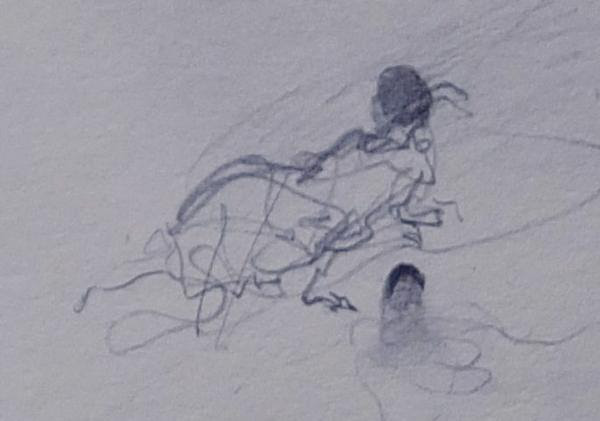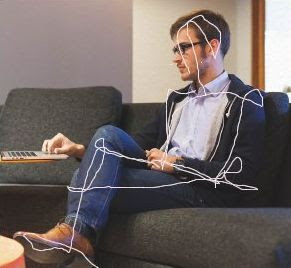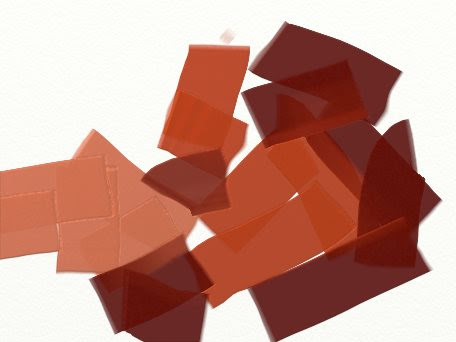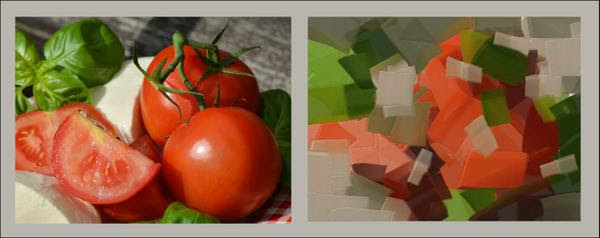Here in the U.S., our long holiday season filled back to back activities and commitments will often rob us of our easel time, time that we all cherish and far too often wish we had more of. Here's a fun thing you can do in your sketchbook with your feet up watching TV. It's especially fun during a sports event, but any program where people are doing stuff on the screen will work.
It's the simplest form of gesture drawing taught by Kimon Nicolaides early in the 20th century. Today, it remains one of the most powerful ways for artists to grab a quick idea. One example is the sketch Andrew Wyeth did as his initial idea for Christina's World.
This shorthand method of studying draws only what the figure is doing, not the edges of the shapes. It's quick, no more than 30 seconds. Here's one I did of a man sitting. My attention is on man sitting. Once the pen starts moving, I follow the feeling of what the head is doing, what the torso is doing, the arms, legs and feet. Not what it is, but what it is doing.
Below, I've broken down a process I use to give you an idea of how it works. First, what is the head doing?
Next, what the torso is doing?
Finally, what the legs and feet are doing?
Here's a page from my 2011 sketchbook done while I watching the Atlanta Braves play.
Doing pure gesture drawing where you are capturing the movement-- only what the subject is doing-- can feed the inner artist in ways you never could believe. Give it a try.

















